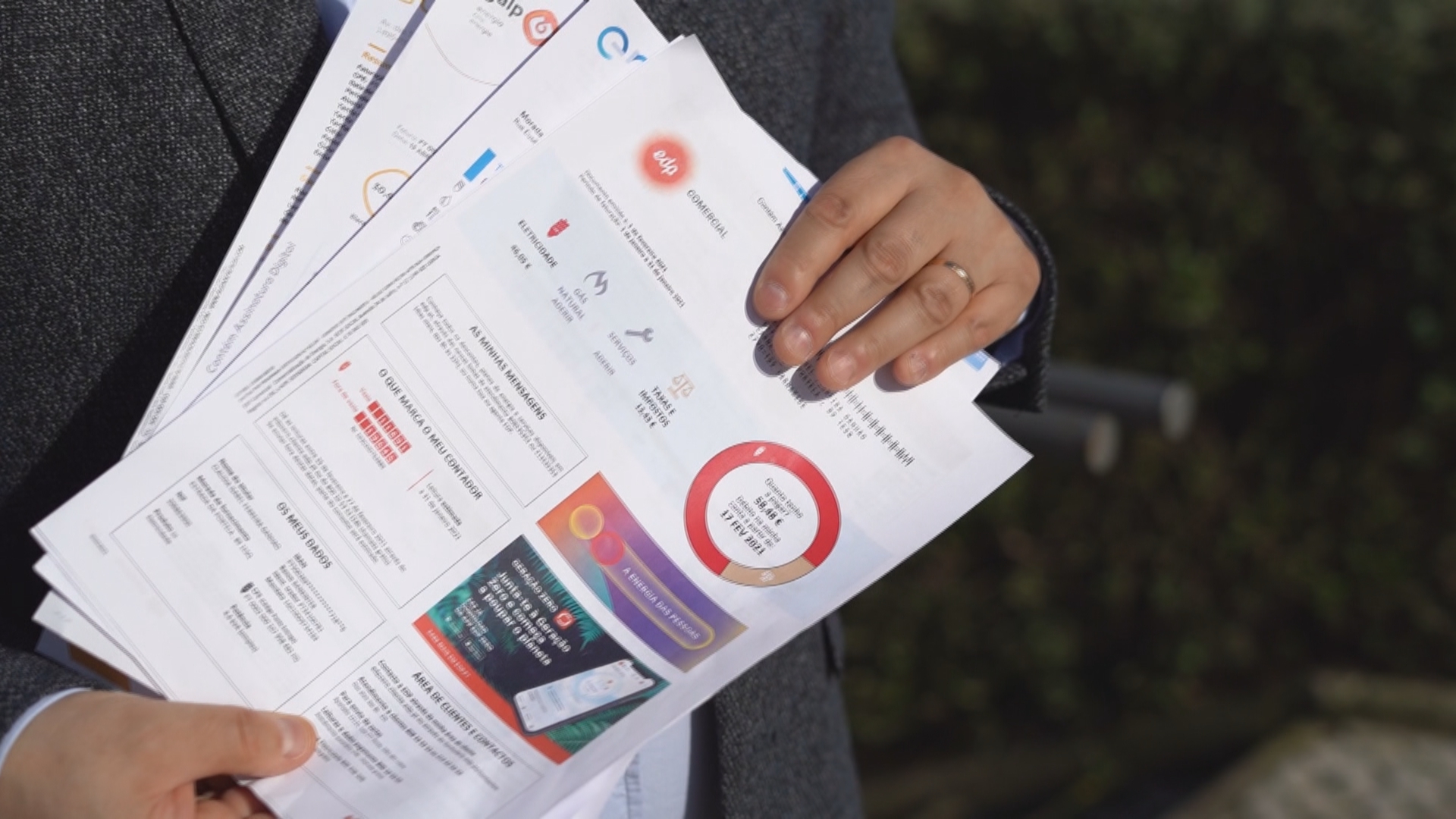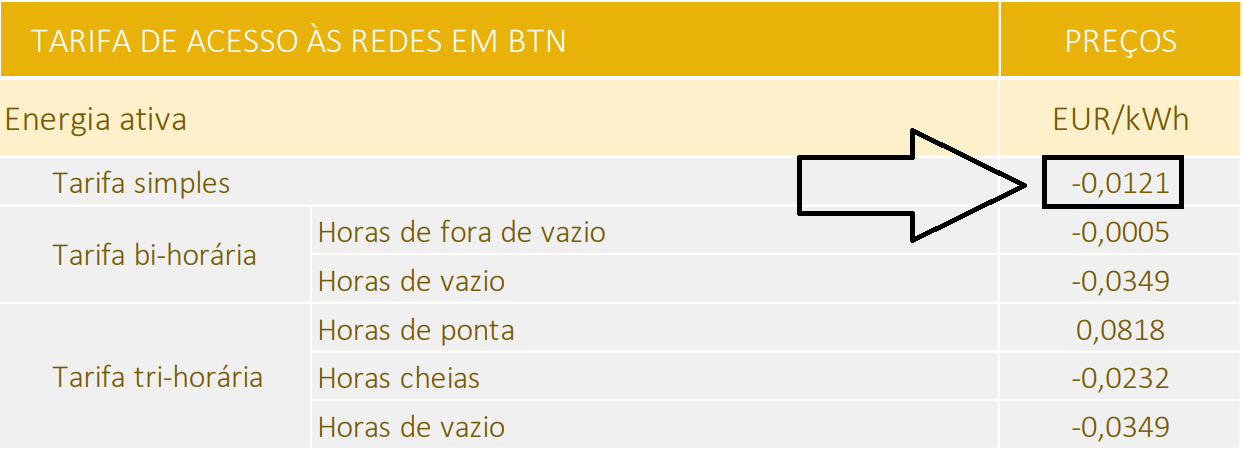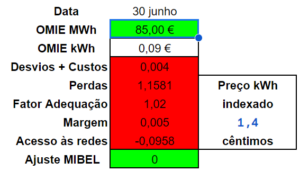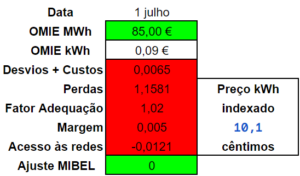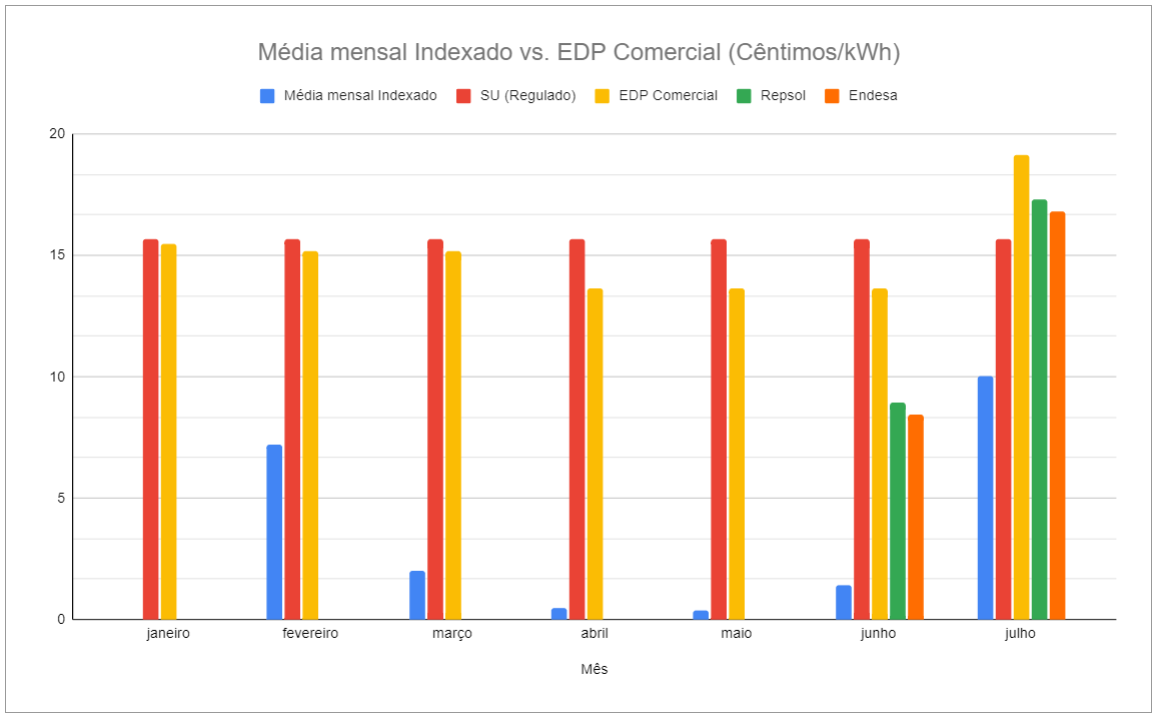ERSE updates network access tariffs on July 1st
Once again, it benefited those who were vigilant and quick to act (change to an indexed tariff). Enjoyed an impressive 6 months of savings. There have been people who have saved €600 or more in these months without doing anything but changing their electric company. Now, is it time to leave? no!!!!! calm.
Electricity will go up for everyone. Therefore, as I have already warned you many times, ERSE was expected to reduce the discount on passive ART (which was also for everyone). It was -9.5 cents per kWh, and ERSE recently announced that starting July 1st it will be “only” -1.21 cents/kWh. In other words, the cost of electricity would rise by 8.37 cents for everyone, including those subject to indexed tariffs.
This means that – at current values - those in the index will not be paying 1.5 cents and will start paying around 10 cents per kWh. But those with a fixed tariff will also see an 8 cent increase on their bill, unless they assume the “loss.” It could happen, but I doubt it.
I did some simulations for you to understand what will happen in July and why you will still save, albeit less.
But before that, it is important to know that in the regulated electricity market (SU Electricity) everything will remain the same.
The regulated market price will remain the same at 0.1567 EUR/kWh. As ERSE announced in the statement, despite the reduced ART discount, it is sticking to it. In a deregulated market, things will move around a lot.
The regulated market, as of July 1:
The new TAR value is: -0.0121 € / kWh.
With this new value, I simulated changes to those in the indexed market (the reference is the Lozboa formula, but the other indexed definitions are quite similar). Find out the changes on July 1, at the same average value of 85 € / MWh in OMIE. I also added the increase Luzboa would make in distractions + costs.
It’s a huge difference.
But I also ran other simulations of what would likely happen in EDP, Repsol and Endesa tariffs (which are currently the cheapest fixed rates).
Pay attention to one detail. In the case of EDP, the 19 cents shown in the graph already includes the 21% discount that the company announced it would offer on July 1, otherwise it would be 22 cents per kWh. SU Electricidade will remain the same and I am waiting for news from Endesa and REPSOL. All the other companies not mentioned are more expensive than this one, so I haven’t included them.
As you can see, if this simulation is correct, then what I’ve explained to you will happen: you’ll still pay to stay in the index, but forget about “free” electricity. He took advantage of who he could and who he wanted. If you follow this page, you will always be one step ahead.
In short, don’t rush. It’s still worth being in the index (and even getting into the index), even if you don’t seem to notice any difference. If you continue to work with the big ones, be prepared for a significant increase, but you will have to wait for the new prices for each of them. There might be some pleasant surprises, I don’t know. I have no privileged information. The chart above is mathematical speculation on my part. But that way you really have a context for what could happen next month.
The regulated option may again become a good choice for those who don’t like to move around, and the indexed one is still a good choice for those who like to move around.
Now we have to wait for the new official prices of each company to confirm these expectations.

“Wannabe internet buff. Future teen idol. Hardcore zombie guru. Gamer. Avid creator. Entrepreneur. Bacon ninja.”

